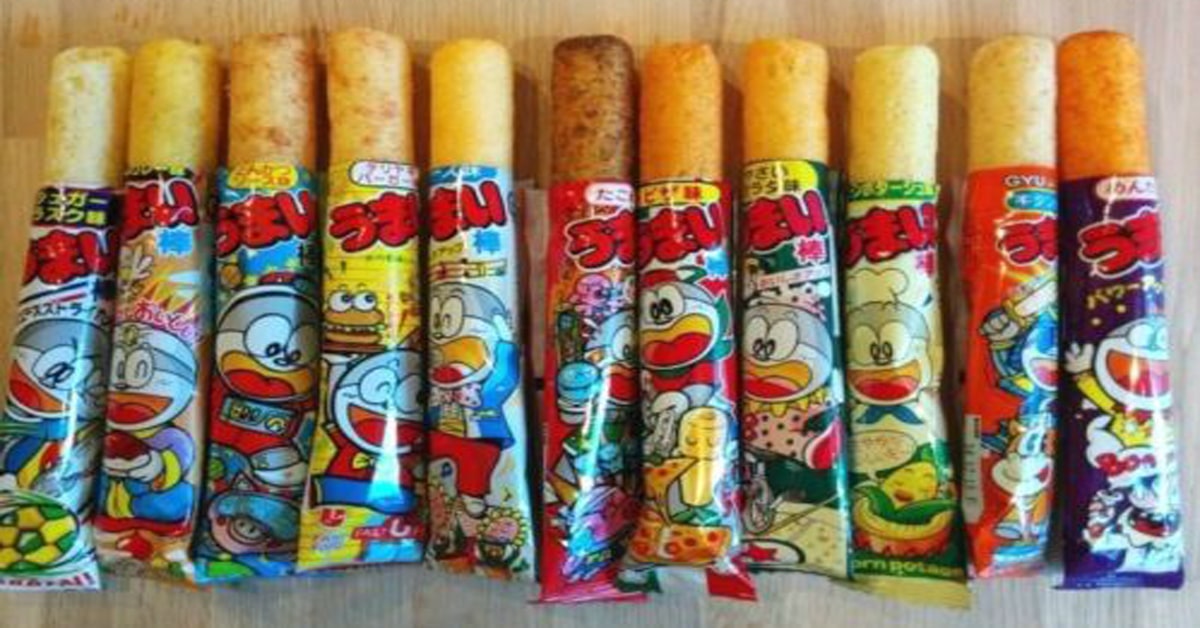Umaibo – A Japanese Puffy Corn Snack
If you visit Japan, you have to definitely try traditional Umaibo sticks. Why so? Because these amazing sticks have been part of the Japanese snack industry for a very long time and proudly represent delicious Japanese traditions. For many years, the puffy corn snack from the manufacturer Yaokin has been popular and loved among Japanese people.
If you are intrigued by the taste and appearance of Umaibo snacks, what they taste like, and why so many people adore them, then you will definitely find what you are looking for.
Please leave a review or any memories of this snack in the comments at the bottom of this page. Thank you!
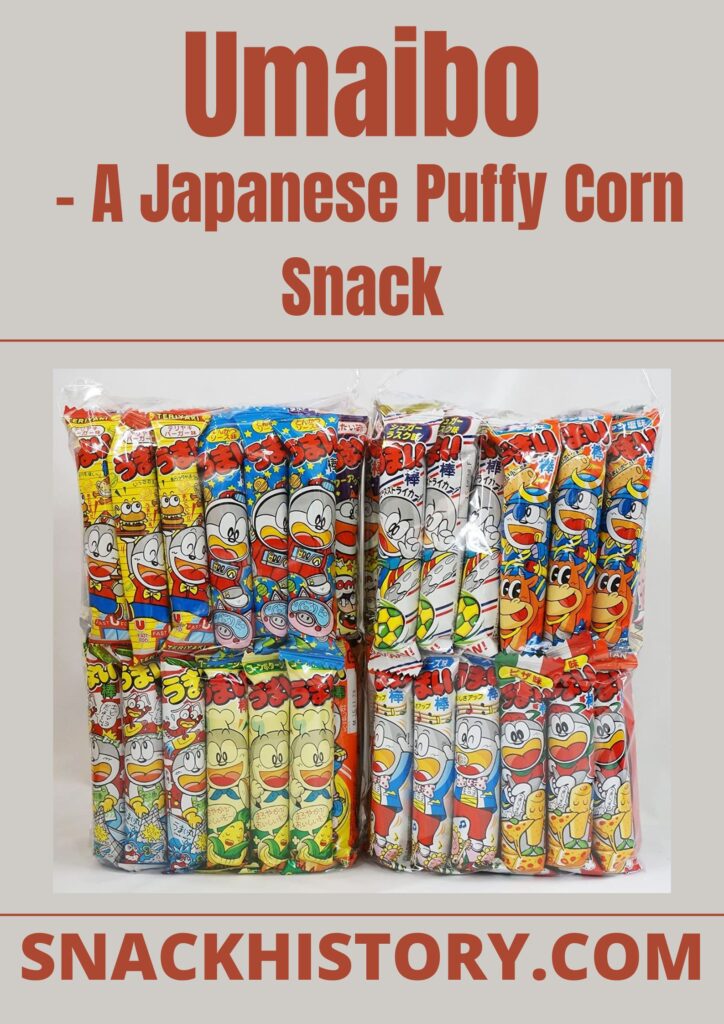
What Is Umaibo Snack?
Umaibo translates as “sweet stick.” However, it is nothing like the candy sticks we know today. Typically, the sweets that we consume are too sweet, have bright colors, and contain artificial ingredients. On the other hand, salty and savory snacks are normally either too starchy, too salty, or too savory. However, the Umaibo snack is nothing like the ones mentioned above. It has a perfect balance, and as its name implies, it has a slightly sweet taste.
Umaibo is a cylindrical piece of puffed corn that, when held, somewhat resembles a short stick. Since it’s hollow in the middle, it really resembles more of a tube, but the package claims that this makes this Japanese snack more crispy. In addition, it is believed that the tube form makes the product stronger, preventing it from being crushed during shipping and likely enhancing the final texture by enabling even cooking throughout.
The adorable mascot, Umaemon is one of Umaibo’s most striking features. The logo shows a cat with a rounded head and short ears, similar to Doraemon. A strange-looking alien appears on every package and is constantly seen acting strangely. The alien was born on September 13, 1978, on a certain star in a far-off galaxy.
Umaibo snack is produced by Riska company and sold by Yaokin. Salad, mentaiko, takoyaki, and cheese are just a few examples of savory and sweet Umaibo flavors. Other flavors include cocoa, caramel, and chocolate. The company frequently introduces and rotates new and unique tastes to maintain interest and establish trends.
The mascot, whose name is still up for debate, goes by a variety of names, including Doyaemon, Umai BOY, and Umaemon, as well as a pun on Doraemon. Another attractive part of Umaibo is its relatively low suggested retail price of 10 yen. To convert in US dollars, the price will be around $0.19. Since the product’s introduction in 1979, the price has been constant at that level. In January 2022, it was announced that the price will rise to 12 yen, which will be the first increase in more than 40 years.
Every individual in Japan could have 5.6 of the crispy, flavorful maize snacks that are sold in quantities of 700 million annually.
Sweet History Of Umaibo
Umaibo is a snack that has a very long history. It was initially created by the Risca Corporation and commercialized by Yaokin Co. in July 1979. The product is said to have originated from a vegetable seller in the Aichi Prefecture in central Japan, where the grandparents of the current president Masahiko Sumiya started producing the snack shrimp crackers to sell alongside their fruits and vegetables. Yaokin was formed in 1960 by Sumiya’s father, who took over as president after he moved to Tokyo following World War II.
Staff members chose to develop long, straight snacks when Yaokin added a puffing machine to its manufacturing portfolio. This machine uses pressure and heat to make puffy snacks. For no other reason than that it tasted great, they gave the new product the name “Umaibo”.
Although similar-looking treats were available, it was common practice for mom-and-pop confectionery shops to sell unwrapped goods back then. Umaibo became popular due to its separate packaging, which made it easier to transport and more water resistant.
Umaibo is an updated version of the corn puff snack known as “Umaimai Bar.” At the time, Snack was sold for the low price of 10 yen per stick. The price hasn’t changed in 41 years, much to the pleasure of Japanese kids and their parents. But the cost of raw ingredients has increased over the years, causing Umaibo to weigh 3 to 5 grams less than the original product.
The product was first targeted towards kids and teenagers on a tight budget and was often offered in confectionery stores. It quickly spread beyond candy shops and was available everywhere, including Japanese supermarkets and stores.
Soon, bulk and bag versions were also available for purchase. 60 distinct flavors were launched over the course of the product’s life, which was an early addition to the rotating flavors gimmick. Corn potage, cheese, and metai have continued to be the top three flavors.
Yaokin now distributes non-snack versions of the product based on its success, sometimes branded with the adorable alien mascot. These include stationery, scented bath salts, lip balms, and a Pachislot game. Yaokin revealed in 2017 that Umaemon would have a younger sister named Umami-chan, who received a brief promotion that year.
Partnerships between Yaokin and affiliated businesses, dubbed “Team Umaibo,” assist in overcoming many difficulties. Since the business lacks a manufacturing facility, Riska Co. handles production. Numerous businesses working together on everything from purchasing materials to distribution are putting effort into areas like manufacturing automation, packing loss reduction, and logistical efficiency in an effort to keep the price at 10 yen.
Logo
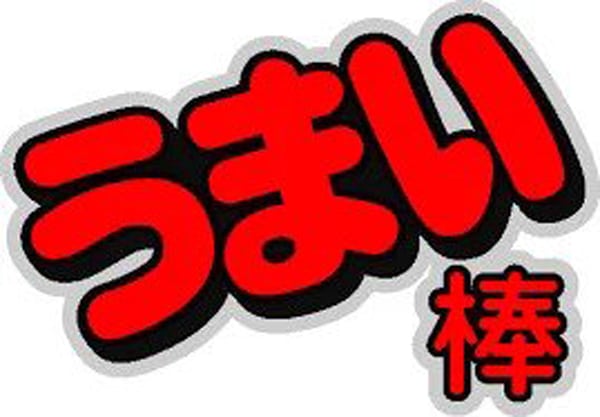
Common Flavors
There are between 15 and 16 “standard” Umaibo varieties available in Japanese supermarkets. There are regional tastes as well, which are unique to particular regions of Japan. Then there are “limited release” varieties, which may only last for one season before disappearing completely. Its wide range of tastes also drew many customers. The initial taste was Worcestershire sauce, then came five others: salami, curry, cheese, and vegetable salad flavors. A Yaokin employee was inspired to create the mentai seasoned cod roe flavor in 1982 when eating some karashi-mentaiko hot fish roe with a customer while on a business trip to Kyushu in southwest Japan.
Yaokin has also profited from new trends, as seen in the 1991 release of its sumo-wrestler meals inspired “crab chanko” taste during the Hanada brothers‘ frenzied popularity wave.
As we already mentioned above, over years, Umaibo had 60 different flavors. The ones that are presently circulating in the manufacturing process include Nori, Beef Tongue, Yakitori, Chicken Curry, Cheese, Salami, mental, Corn Potage, Teriyaki Burger, Vegetable Salad, Chocolate, Sugar Rusk, Rice Dumplings Zongzi, and others.
Flavors that are limited in quantity and are only released in specific regions of the country are Honey, Kiritanpo, Okonomiyaki, Mentaiko, Monja, and Apple Pie.
Unfortunately, some amazing flavors have been discontinued and are no longer available today. The list includes Pizza, Curry, Caramel Candy, Cocoa, Chocolate Peanut, American Hot Dogs, Red Lobster, Marine Beef, and others.
Ingredients
- Corn
- Palm Oil
- Glucose
- Sugar
- Skim Milk Powder
- Whey Powder
- Bread Crumbs
- Salt
- Corn Powder
- Spice (Onion, Pepper, Turmeric)
- Yeast Extract Powder
- Protein Hydrolysate
- Parsley, Monosodium Glutamate (Amino Acid)
- Artificial Flavor & Sweetener (Sucralose)
Nutrition
| Serving Size: | 0.20 oz Servings Per Container 30 | % Daily Value |
| Amount Per Serving | ||
| Calories | 34 | |
| Total Fat | 2g | 3% |
| Saturated Fat | 0g | 0% |
| Trans Fat | 0g | |
| Cholesterol | 0mg | 0% |
| Sodium | 35mg | 1% |
| Total Carbohydrate | 3g | 1% |
| Dietary Fiber | 0g | 0% |
| Sugars | 0g | |
| Protein | 0g |
- Percent Daily Values are based on a 2,000-calorie diet.
Mascots
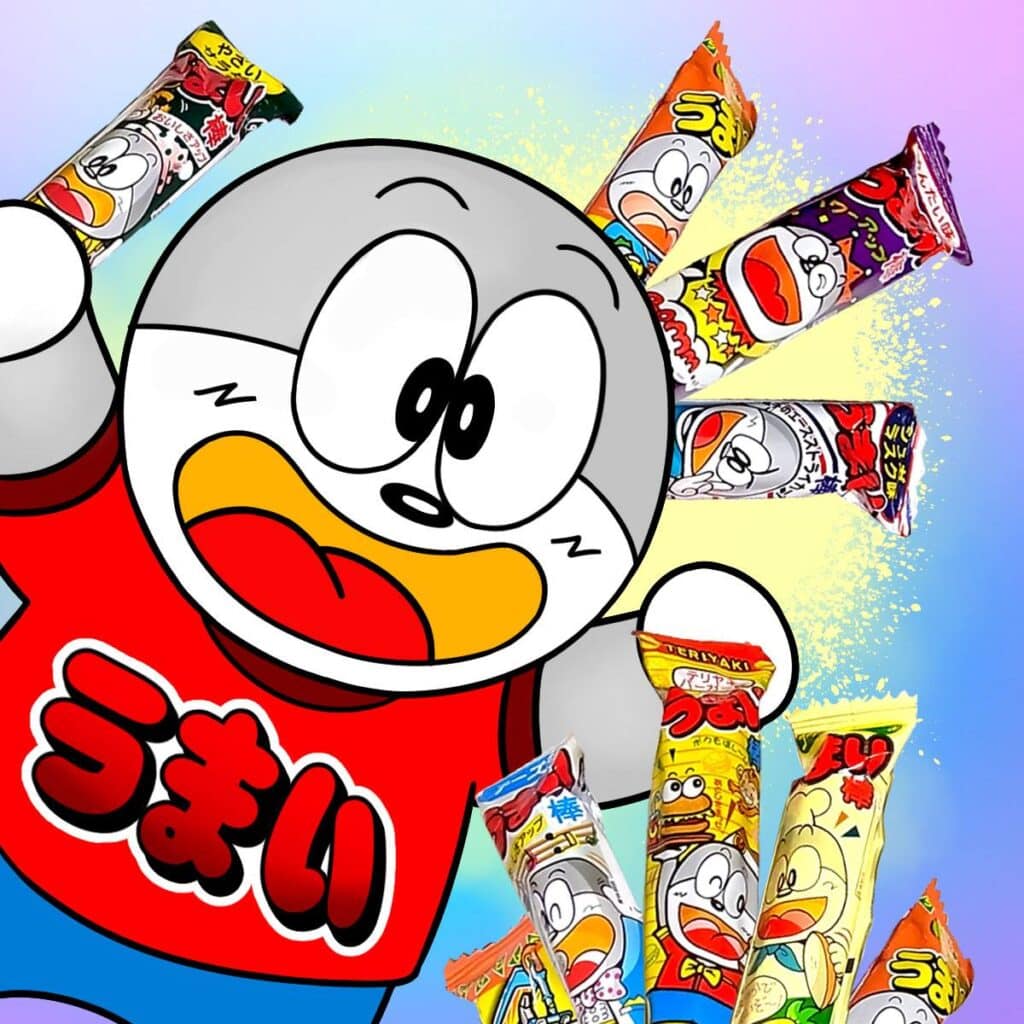
The Umaibo mascots are far more distinctive than American commercial icons. Each figure appears to have its own individuality, replete with birthdays and hobbies.
Here are a few of the most popular and beloved Umaibo mascots.
Umaemon
The primary mascot of Umaibo is a figure with a round head and a gaping mouth called Umaemon, who typically wears a costume. He enjoys cosplaying, which is why he appears in a costume on each Umaibo wrapper, according to the Umaibo website. Since Umaemon is gray and has no whiskers, he differs greatly from Doraemon, which has a red nose and is blue in color.
Since Umaibo’s debut, its mascot “Umaemon” has been seen performing a variety of tasks on its packaging, including singing, popping out of test tubes, and fishing.
Umami-chan
Umami-chan debuted in 2017 as an anime character wearing a half-Umaibo cap. She is Umaemon’s long-lost 17-year-old sister and speaks through an umbo. As far as we can tell, she appears on the outside of huge bags that generally sell to adults at Don Quijote shops. This mascot tweets on Twitter, has a theme song, an Instagram account, and a website of her own. She acknowledges that she doesn’t resemble her brother, and she does so frequently.
Doraemon
Doraemon is a robot; this is an extraterrestrial. Children gave the figure several nicknames, including “Umaemon,” “Umai Boya,” and “Umai Boy,” when he first appeared without a name. Yaokin has not given the character a formal name. Sister “Umami-chan” resembles a person from a recent television show.
Umicheal
Umichael, Umami’s beloved cat, made his debut in 2018. Umicheal has a face that is identical to Umaemon’s and the appearance of a cat. He claims to be a space spy who was assigned to look into Umaemon and Umami because he thinks they could be extraterrestrials.
Pictures
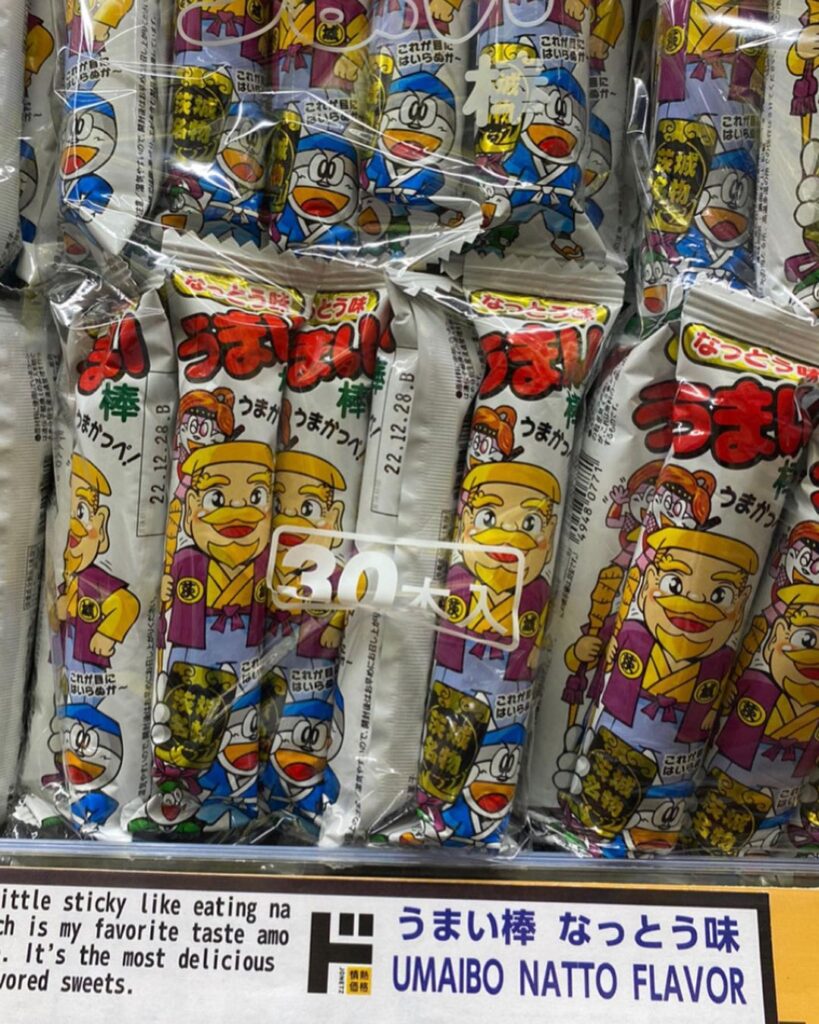
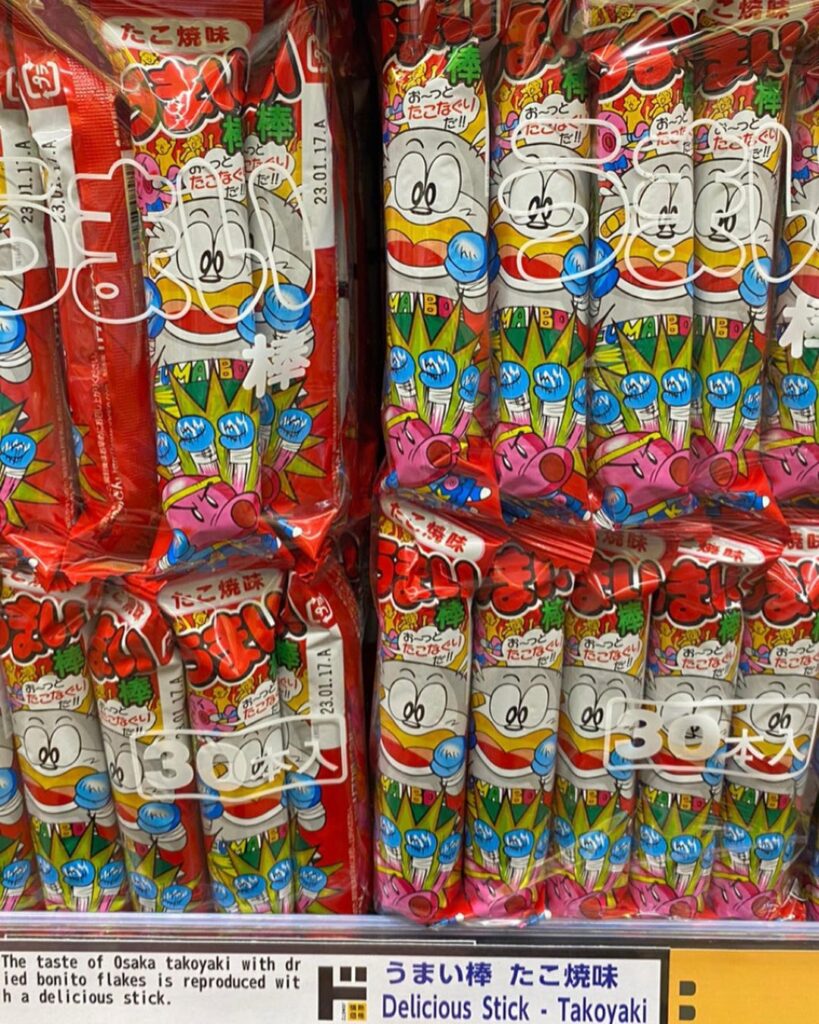
Bottom Line
If you’re a huge lover of Japanese snacks, you’ve probably heard of or had Umaibo, which has been one of the country’s most well-known and iconic foods since 1979. The first things that come to mind when thinking about traditional Japanese treats are definitely matcha Kit Kats and chewy mochi.
However, Umaibo, one of the most well-known and recognizable sweets in Japan today, is actually a far more explicit invention. In 1979, Umaibo was originally produced and distributed through dagashi-ya, a traditional Japanese confectionery store.

Nato is a content writer and researcher with a background in psychology. She’s passionate about writing about the candy industry and exploring the cultural significance of sweets and treats. She believes that the stories behind our favorite snacks can reveal a great deal about our values.
Please leave a review or any memories of this snack in the comments below. Thank you!
Click here for a full A-Z list of Snacks and Candy
